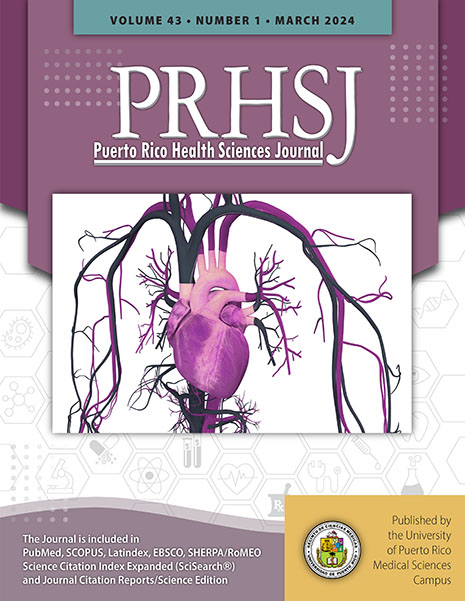Abstract
Objective: Neonatal abstinence syndrome (NAS) is a set of drug withdrawal symptoms suffered by neonates exposed to drugs in utero. Several studies have widely described NAS incidence and treatment approach; however, little is known regarding the incidence and manifestations of this disease in Puerto Rico (PR). The principal aim of this study was to describe NAS incidence in the neonatal units of hospitals affiliated with the University of PR in terms of occurrence, clinical manifestations, and treatment approaches. Methods: Our study evaluated the medical records of NAS babies diagnosed from 2018 through 2020 at 2 hospitals affiliated with the University of PR Medical Sciences Campus. Descriptive and inferential statistics were employed to analyze trends. Results: We identified 12 neonates diagnosed with NAS, 5 with low birthweights (<2500 g); for a NAS incidence of 2 cases per 1000 admitted for the 3 years of recollected data. The urine toxicology results revealed that 9 had experienced intrauterine polydrug exposure. Phenobarbital loading dose were determined on the day of diagnosis (indicated by Finnegan score). The first manifestation of NAS symptoms varied: 8 neonates showed symptoms within 48 hours after birth, whereas 4 had withdrawal symptoms within 72-120 hours of their births. Differences between dosing practices and guidelines were observed, ranging from a 0.69% to a 25% difference during treatment initiation. Conclusion: Further research on the incidence of NAS in PR (national level) is needed for a deeper understanding that we hope will lead to the development of enhanced treatment protocols in PR.
Authors who publish with this journal agree to the following terms:
a. Authors retain copyright and grant the journal right of first publication with the work simultaneously licensed under a Creative Commons Attribution License that allows others to share the work with an acknowledgement of the work's authorship and initial publication in this journal.
b. Authors are able to enter into separate, additional contractual arrangements for the non-exclusive distribution of the journal's published version of the work (e.g., post it to an institutional repository or publish it in a book), with an acknowledgement of its initial publication in this journal.
c. Authors are permitted and encouraged to post their work online (e.g., in institutional repositories or on their website) prior to and during the submission process, as it can lead to productive exchanges, as well as earlier and greater citation of published work (See The Effect of Open Access).
